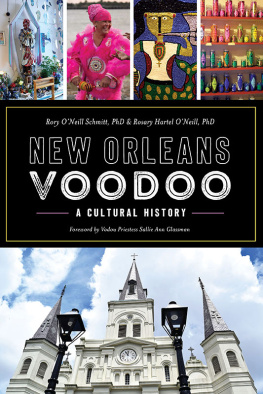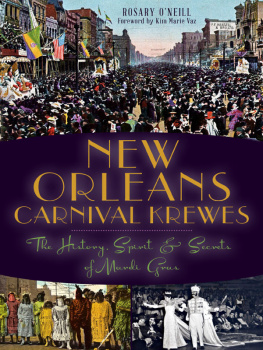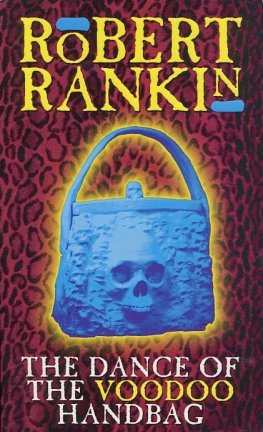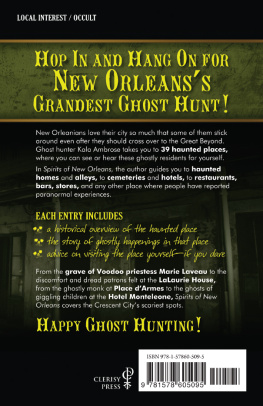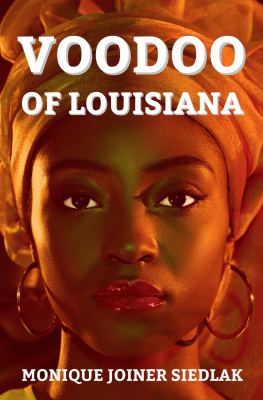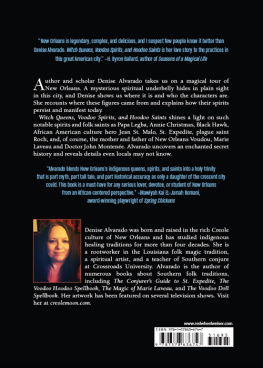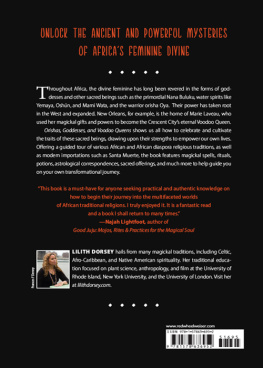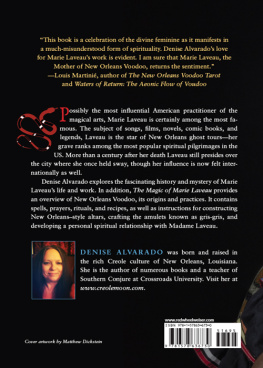


Published by The History Press
Charleston, SC
www.historypress.com
Copyright 2019 by Rory ONeill Schmitt, PhD, and Rosary Hartel ONeill, PhD
All rights reserved
Front cover, clockwise from top left: The International Shrine of Marie Laveau; Sula Spirit, photograph by Kim Welsh; Drapo tapestry; potion oils at Voodoo Authentica; St. Louis Cathedral.
Photographs by Rory ONeill Schmitt unless otherwise noted.
First published 2019
e-book edition 2019
ISBN 978.1.46713.799.7
Library of Congress Control Number: 2018959011
print edition ISBN 978.1.43966.597.8
Notice: The information in this book is true and complete to the best of our knowledge. It is offered without guarantee on the part of the authors or The History Press. The authors and The History Press disclaim all liability in connection with the use of this book.
All rights reserved. No part of this book may be reproduced or transmitted in any form whatsoever without prior written permission from the publisher except in the case of brief quotations embodied in critical articles and reviews.
CONTENTS
FOREWORD
Hone. Respek.
Honor and respect. The first words spoken upon entering a Haitian Vodou temple. Honor and respect are offered to GodBondye in the Kreyl languageto the Lwa, the spirits of Vodou and the ancestors. Honor and respect are an essential part of service to the community of Spirit; to the elders; the priests, or oungan; and the priestesses, or manbo, to the human community and how one carries oneself. Vodous early ancestors were enslaved in the New World. Everything was taken from them, including their dignity and their place and power in the world. It is no wonder that honor and respect became touchstones of healing and empowerment, through the grace of the Spirit.
Too often, journalists and filmmakers, writers and producers exploit salacious images of Vodou in order to titillate their intended audiences. The religion is presented as a depraved, orgiastic and evil practice. How refreshing, then, to come across Rory and Rosarys book. They recognized that Vodou is a deep, sophisticated practice and made the effort to educate themselves about the many forms the religion/tradition/culture has taken. They attended ceremonies; spoke with Vodou priests and priestesses, elders, practitioners, scholars and artists; and read scholarship on the subject. They explored the many paths of Vodou/Voodoo/Hoodoo/Voudon practiced in New Orleans.
Because they are local New Orleanians themselves and have a love for their city, they want to present the local spiritual traditions from the perspective of natives: how Vodou permeates the life, history and culture of New Orleans. There is a reason New Orleans is different than any other city in the United States. Something only sensed unconsciously by many locals and visitors: New Orleanss soul beats to an Afro-Caribbean rhythm. As Rory and Rosary explore the many ways Vodou informs the practice of spirituality, how community forms and how artwork is created, the reader also is immersed in the journey.
While Rory and Rosary are outsiders to Vodou practice, it is said that it sometimes takes an outsider to truly see a practice with the alertness and attention that come with a new experience. Although I have studied and practiced and served as a manbo for many years, I am always learning. Vodous waters run deep, and while based in tradition, Vodou is constantly changing, adapting, evolving. Each person interprets from her/his own perspective. It is wonderful to receive new information and insights from all the sources and practitioners presented in the book, as well as through the creative lens of Rosary and Rorys perceptions. Speaking of lenses, Rorys camera lens presents moments of mystery, expressed through movement and light.
Sensitivity, respect and tolerance form the bedrock of their approach and allow them entre into the very private spiritualities of the practitioners presented. In the course of their research, Rosary and Rory have moved from outsider status to embrace core components of the religion, which they have integrated into their own personal spiritual practices. Vodou is an ancient spring of ongoing creative evolution and inspiration. Rory and Rosary are not anthropologists but creative artists themselves. They are speaking on themes they know, so their words and images resonate with authenticity and meaning.
Respect and honor to Rory and Rosary, to the ancestors and mysteries they present in these pages, to the extraordinary history they illuminate and to the ever-evolving and wondrous communities that emerge and contribute to the soul of New Orleans.
Sallie Ann Glassman
Initiated Vodou priestess, artist, writer and co-creator of the New Orleans Healing Center
ACKNOWLEDGEMENTS
So many champions have helped us in the glorious journey toward publication. We want to thank our brilliant editors, Adam Ferrell and Amanda Irle, for believing in us and in the value of Voodoo in our increasingly secular world. Our agent, Linda Langton, provided the needed enthusiasm and support behind the scenes.
Visionaries in the Voodoo community were helpful in illuminating research: Priestess Sallie Ann Glassman, Priestess Miriam Chamani, Priestess Brandi Kelly, Janet Sula Spirit Evans, Madame Cinnamon Black, Eugene Thomas and others. So many Voodoo practitioners, who wish to remain anonymous, provided essential interviews. Many holy ones, as well as individuals at the New Orleans Historic Voodoo Museum, were there in the background inspiring us. Scholars, as well as artists, including Dr. Martha Ward, Dr. Julye Bidmore, Dr. Stephen Wehmeyer and Adewal Adenle, guided us to discover deeper meanings.
Colleagues at the New Orleans Writers Workshop provided numerous insights, and fearless writer and historian C.W. Cannon (who led the workshop) was tireless in his reviews and support. Assistants Laurie Sapakoff, Jim Bosjolie and Sara Frazier and photographers D.C. Larue, Kim Welsch and Traci Bower were wonderful resources.
We want to thank Heather Green and Leon Miller and the superb historians and librarians at the Historic New Orleans Collection and the Louisiana Research Center. They prepared carts of requested materials and had all of this knowledge ready. It was beautiful.
Finally, we wish to thank our families, particularly our mothers and grandmothers who have gone before us. We are grateful to our loving spouses, Robert Harzinski and Dasan Schmitt, and children, Dale ONeill, Barret OBrien, Rachelle Geerds, Olivia and Rowan Schmitt, who are ever-present blessings in our lives. Additionally, supportive and generous family members include Victoria and Brett Schmitt, Maya Schmitt and Jasmine Stevenson. Friends and loved ones inspired us to continue our work: Melinda Thomas, Monica Keyes, Allison Lee, Jennifer Weidinger, Joy Williams, Dawn Henry and Jackie Smith. Nina Kelly introduced us to important people in New Orleans.
One particular relative, Dick ONeill, enabled this journey to happen. After inquiring about a chicken foot hanging from his rearview mirror, he introduced us to Voodoo and to his friend Sallie Ann Glassman. We remain so very grateful for this experience.
We embrace you, we cherish you and we thank you for giving us the strength to enter and learn about the magnificent world of Voodoo. May we all, through Voodoo and each other, grow closer to God.
Next page
